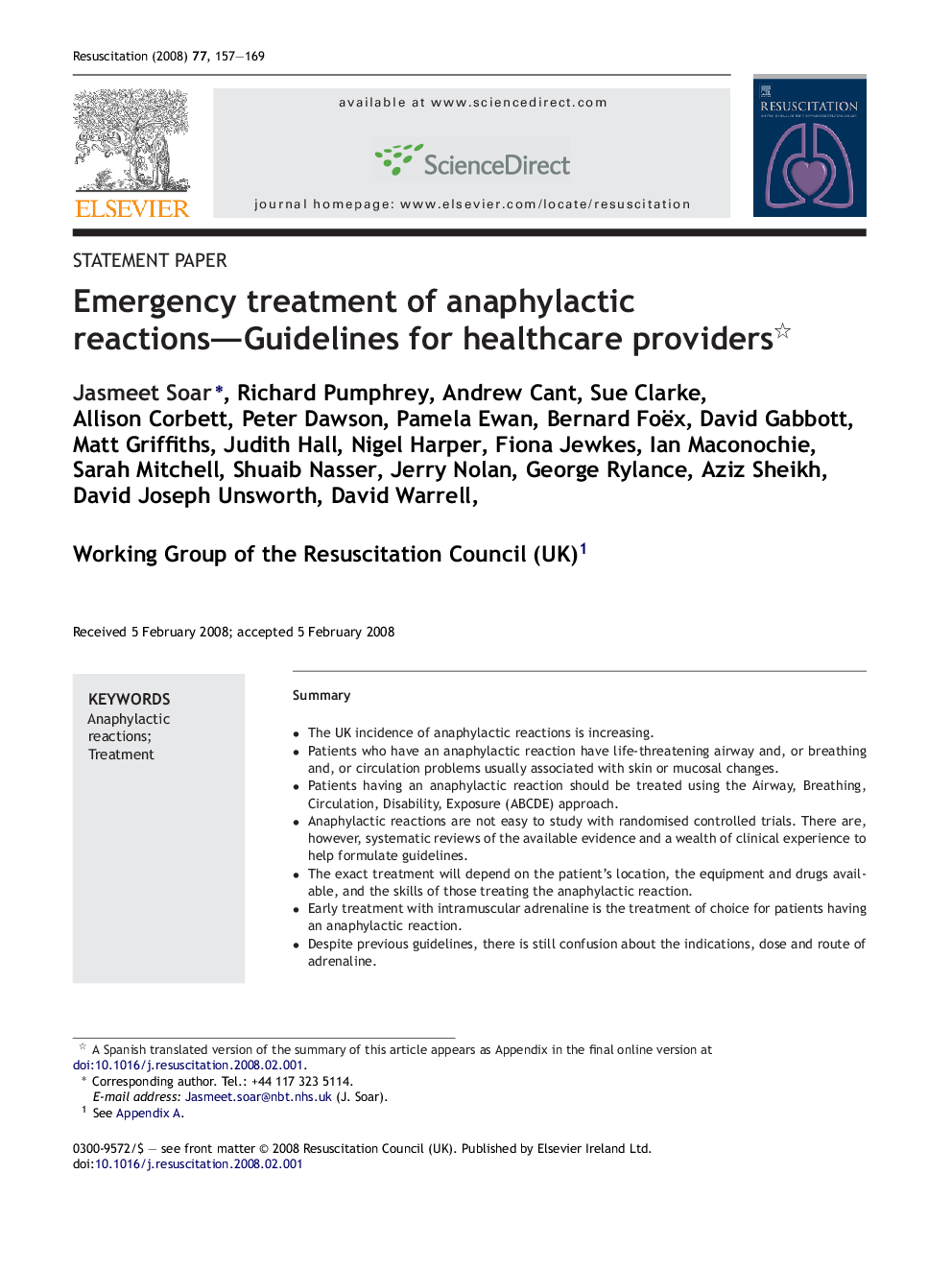| کد مقاله | کد نشریه | سال انتشار | مقاله انگلیسی | نسخه تمام متن |
|---|---|---|---|---|
| 3010524 | 1181519 | 2008 | 13 صفحه PDF | دانلود رایگان |

Summary
• The UK incidence of anaphylactic reactions is increasing.
• Patients who have an anaphylactic reaction have life-threatening airway and, or breathing and, or circulation problems usually associated with skin or mucosal changes.
• Patients having an anaphylactic reaction should be treated using the Airway, Breathing, Circulation, Disability, Exposure (ABCDE) approach.
• Anaphylactic reactions are not easy to study with randomised controlled trials. There are, however, systematic reviews of the available evidence and a wealth of clinical experience to help formulate guidelines.
• The exact treatment will depend on the patient's location, the equipment and drugs available, and the skills of those treating the anaphylactic reaction.
• Early treatment with intramuscular adrenaline is the treatment of choice for patients having an anaphylactic reaction.
• Despite previous guidelines, there is still confusion about the indications, dose and route of adrenaline.
• Intravenous adrenaline must only be used in certain specialist settings and only by those skilled and experienced in its use.
• All those who are suspected of having had an anaphylactic reaction should be referred to a specialist in allergy.
• Individuals who are at high risk of an anaphylactic reaction should carry an adrenaline auto-injector and receive training and support in its use.
• There is a need for further research about the diagnosis, treatment and prevention of anaphylactic reactions.
Journal: Resuscitation - Volume 77, Issue 2, May 2008, Pages 157–169